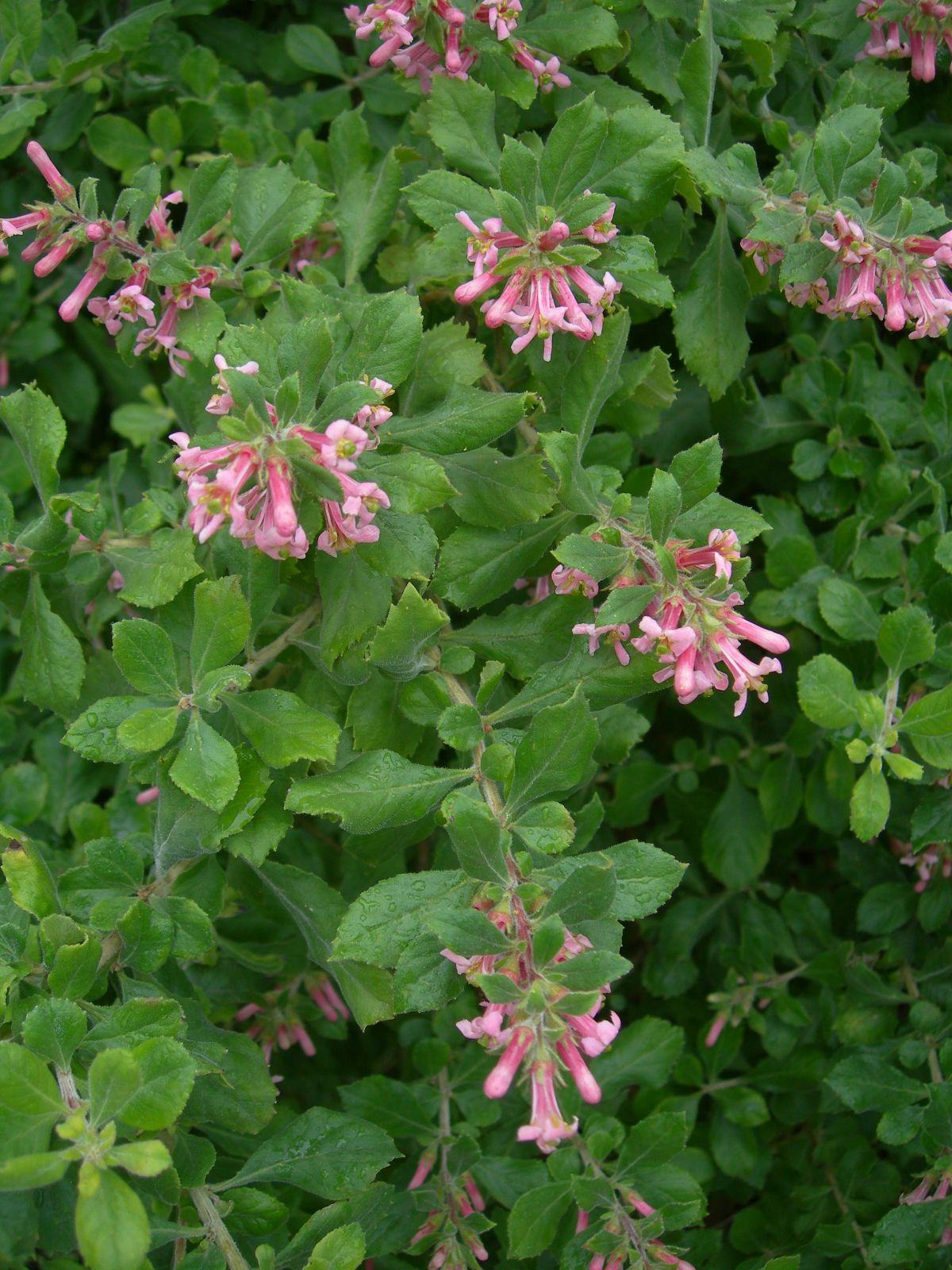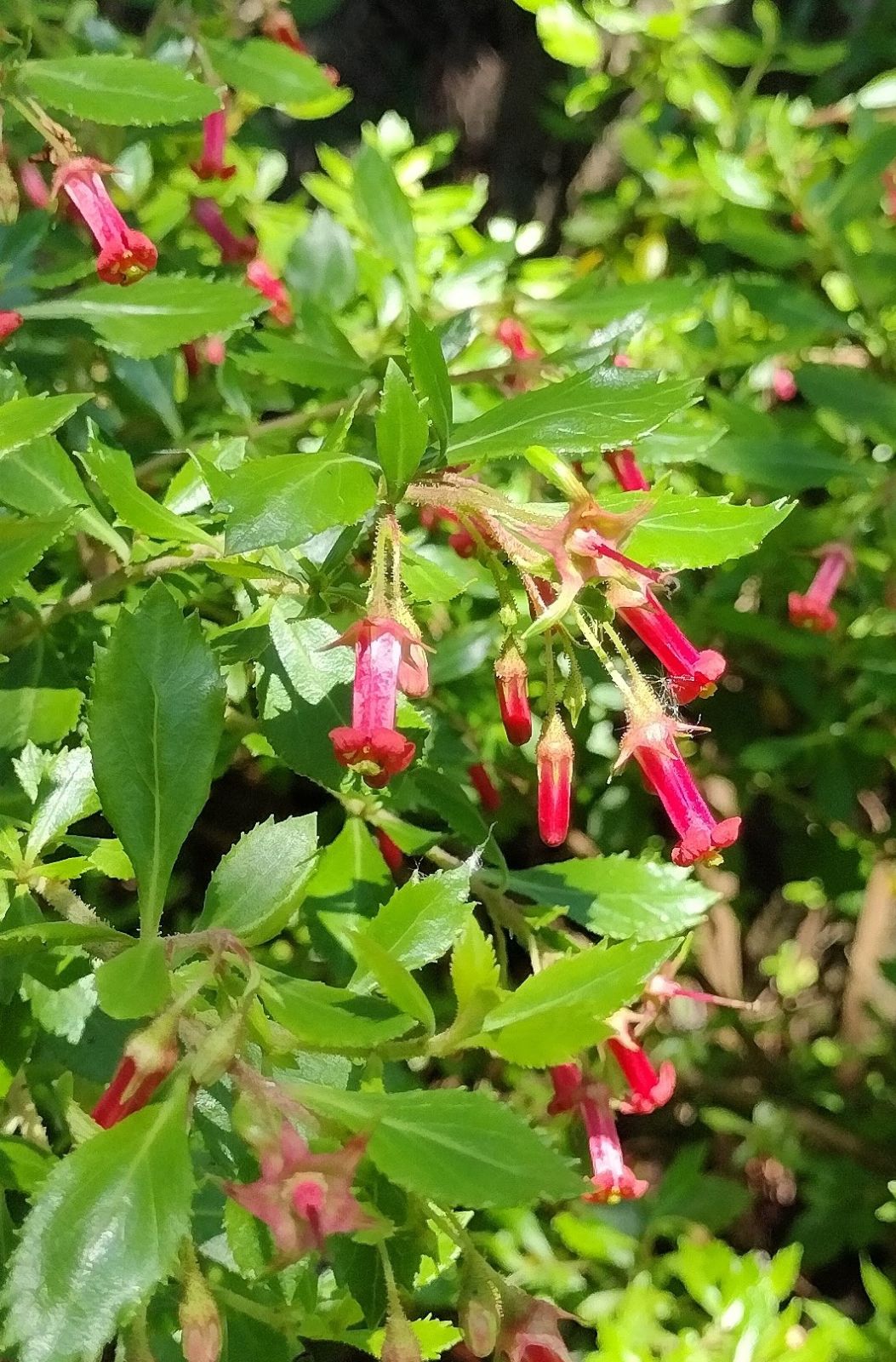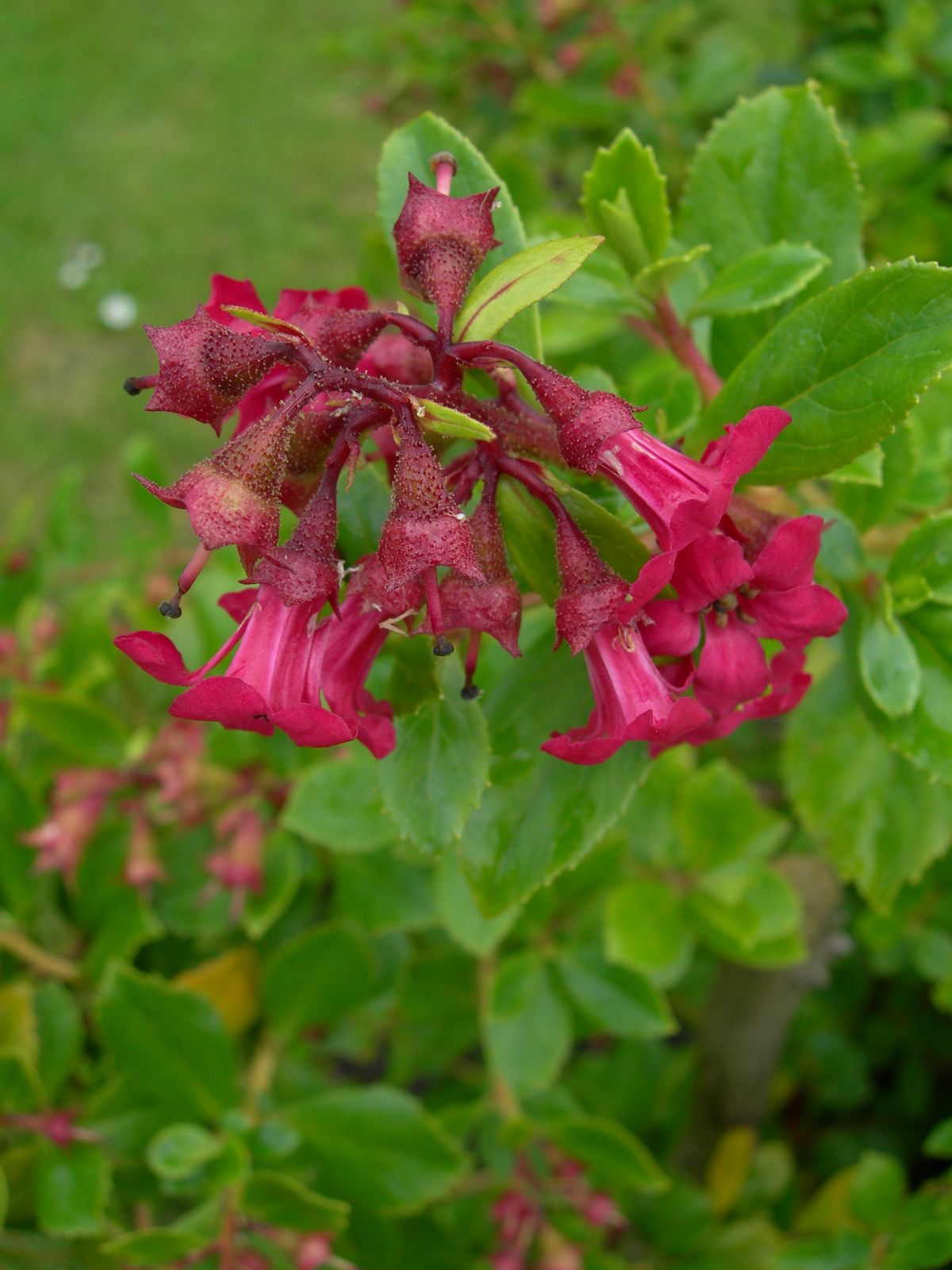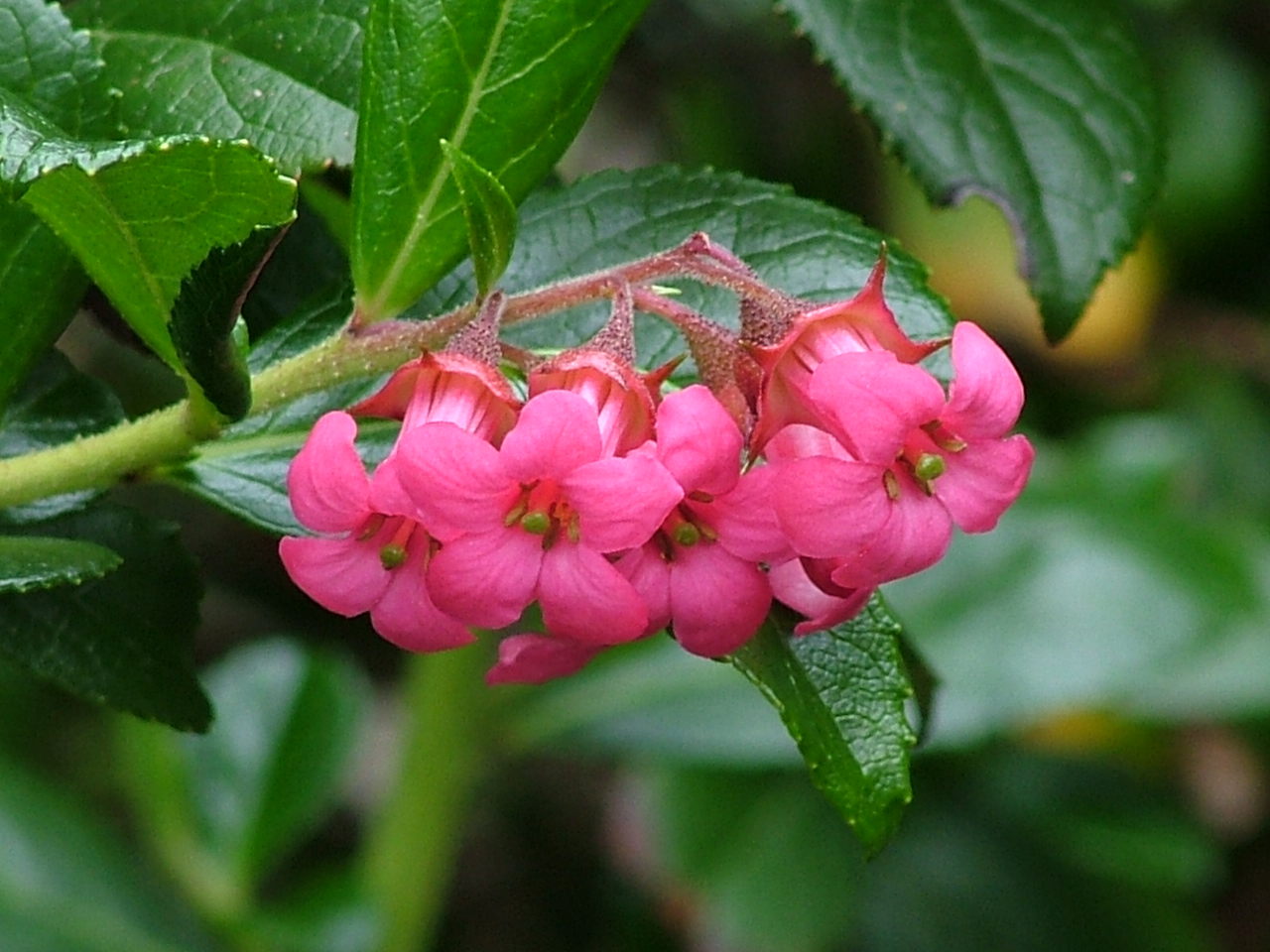Escallonia rubra
Credits
Article from Bean's Trees and Shrubs Hardy in the British Isles
Recommended citation
'Escallonia rubra' from the website Trees and Shrubs Online (treesandshrubsonline.
Genus
Synonyms
- Stereoxylon rubrum Ruiz & Pavon
- E. punctata DC.
- E. rubra var. punctata (DC.) Hook, f.
- E. duplicato-serrata Rémy
Other taxa in genus
- Escallonia alpina
- Escallonia bifida
- Escallonia × exoniensis
- Escallonia illinita
- Escallonia 'Iveyi'
- Escallonia laevis
- Escallonia 'Langleyensis'
- Escallonia leucantha
- Escallonia macrantha
- Escallonia montevidensis
- Escallonia organensis
- Escallonia pterocladon
- Escallonia pulverulenta
- Escallonia revoluta
- Escallonia rosea
- Escallonia tucumanensis
- Escallonia virgata
An evergreen shrub up to 15 ft high, with a peeling bark; young stems downy or hairy and often somewhat viscid and glandular. Leaves very variable in shape, even on the same plant, being broadest at, above, or below the middle, mostly 1 to 2 in. long, 5⁄8 to 1 in. wide, acute or short-acuminate at the apex, tapered at the base onto a short petiole, simply or doubly toothed in the upper part, glabrous and glossy above, undersides speckled with resin-glands, often densely so, but glabrous except for the sometimes hairy midrib, veins impressed above, prominent beneath. Flowers pink to deep crimson, produced in loose terminal panicles, few- to many-flowered, 1 to 4 in. long, often leafy at the base; pedicels 1⁄8 to 3⁄8 in. long, clad with erect hairs and usually glandular also. Calyx normally glandular, at least on wild plants, the glands more or less stalked and usually mixed with short erect hairs; calyx-lobes triangular, tapered at the apex. Claws of petals erect, forming a tube 1⁄2 in. or slightly less long, the limbs spreading. Disk narrowly conical, enclosing the base of the style. Capsules obovoid, about 1⁄3 in. long.
Native of Chile and bordering parts of Argentina, ranging in the former country from the central provinces to the Straits of Magellan. It is a very variable species, perhaps the result (as Kausel suggests) of the merging through hybridisation of several once independent species. Hooker remarked that no two specimens are exactly alike. The original garden stock of E. rubra derives from an introduction to the University of Liverpool in 1827 and is hardy. This form is only slightly glandular, and more or less glabrous, except for the downy young shoots; flowers red. It is figured in Bot. Mag., t. 2890. A later introduction, with deeper-coloured flowers and with much more abundant glands, was figured in Bot. Mag., t. 6599 (1881), under the name E. rubra var. punctata. The origin of the plant figured was not stated, but it appears to have been grown previously under the horticultural name “E. sanguinea”. The escallonia introduced by Comber under No. 1023 belongs to E. rubra, though his field specimen under this number resembles the var. macrantha in size of leaf.
From the Supplement (Vol. V)
† E. ‘Red Elf’. – A hybrid of bushy habit, bearing dark red flowers very freely in June. It was raised in Holland by the firm of P. G. Zwijnenburg from a cross between ‘William Watson’ and ‘C. F. Ball’ (Dendroflora No. 10, p. 68 (1971)). As might be expected from this parentage, it is very near to E. rubra.
E 'Ingramii'
Flowers of a similar colour to those of the commonly cultivated form of E. rubra var. macrantha but scarcely so large. Leaves smaller and proportionately narrower. Possibly a hybrid or intermediate between E. rubra and the var. macrantha.'Glasnevin Hybrid'
Flowers resembling those of ‘C. F. Ball’ but slightly more rosy in colour. Leaves dull above, undersides densely resin-dotted and rough to the touch.
var. glutinosa (Phil.) Reiche
Synonyms
E. glutinosa Phil
var. macrantha (Hook. & Arn.) Reiche
Synonyms
E. macrantha Hook. & Arn
A shrub 6 to 10 ft high, forming a dense bush of luxuriant habit, the glutinous branchlets covered with down, intermingled with which are numerous erect glands. Leaves broadly oval or obovate, tapering at the base; 1 to 3 in. long, {1/2} to 1{3/4} in. wide, deeply toothed, glabrous, and of a dark shining green above, dotted beneath with numerous resinous glands; stalkless. Racemes terminal, sometimes branched and forming a panicle, 2 to 4 in. long. Flowers bright rosy-red, about {5/8} in. long and wide; receptacle covered with sticky glands intermixed with hairs; flower-stalk downy. Bot. Mag., t. 4473.Introduced from the Island of Chiloe by Wm. Lobb, about 1846, and now one of the commonest evergreen shrubs in the south-western maritime districts, where it is frequently used to make hedges. In the London district and farther north it needs in most places the protection of a wall, making indeed one of the handsomest of evergreen wall-coverings. It thrives admirably in most of the southern seaside resorts, flowering during June and the succeeding months.At the Rosewarne Experimental Station at Camborne, Cornwall, this variety has been found to make the most reliable screen against the Atlantic winds. Two new cultivars raised by Messrs Treseder – ‘Crimson Spire’ and ‘Red Hedger’ – have proved almost as wind- and spray-resistant and are of faster growth. The former is of stiffer habit than the other and will make a hedge 6 to 7 ft high in four years; it also has smaller leaves than in ‘Red Hedger’, very dark and glossy, and better flowers. Both arose in the nursery as self-sown seedlings.




